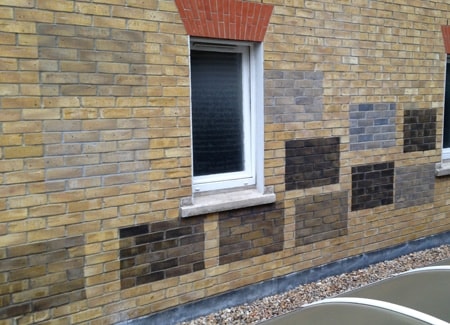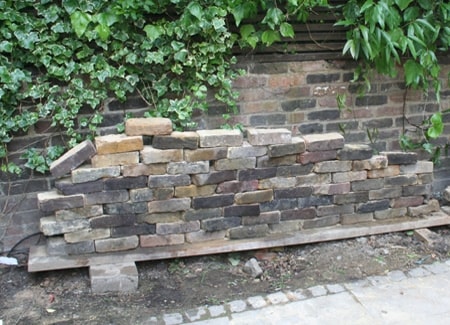About Brick Tinting

The application of colour to enhance the appearance of brickwork dates back several centuries. By the 19th century and especially in London, ‘colourwashes’ were often applied (in conjunction with ‘Tuck Pointing’) in an attempt to create a monochrome façade that hid undesirable variations in brick colour.
Whilst remnants of these colourwashes can still be seen, the materials put to use weren’t as durable as modern day ‘tints’. It wasn’t until the second half of the 19th century that the science behind ‘tinting’ developed in Bavaria with the creation of silicate paints designed to withstand harsh alpine weather. By the latter half of the 20th century a more translucent ‘tint’ had evolved in Britain allowing brick and mortar suppliers to disguise colour inconsistencies between batches of bricks and premixed, coloured mortars.

In most situations, different tints are applied to bricks one by one with the aim of creating the desired variety of tones and colours. Following this, the mortar is often tinted to create the perfect match. Ideally weaker tints are used to allow for the natural patina of the brick to come through, as a result it is better to select the best brick before deciding to embark on building works if tinting is to be employed thereafter. As well as being a very durable treatment, it is non-film forming and as a result tinted bricks will wet and dry the same as their untreated neighbours. What’s more the dyes used are non-toxic and non-flammable and as a result, they are ideal for use in fire surrounds and other areas that are subjected to high temperatures.

Before deciding to tint however it is important to first scrutinise the extent to which factors such as joint size, brick size or texture contribute to an eyesore alongside more obvious colour discrepancies. Larger mortar joints for example will often appear lighter even when the mortar colour is the same and more textured brick surfaces can appear darker in the sunlight due to the effect of shadow. Furthermore, several other factors should be taken into account such as the strength of tint required to achieve a suitable match, the texture and porosity of the brickwork, whether any surface residue exists, the moisture content and so on.
Today tinting is commonly sought by home owners, architects, and contractors alike not just to address unsightly variations in brickwork but at times to create a whole new appearance for dated brick buildings or to make a stunning feature from exposed internal brickwork. The Tinting process has long been recognised by the Brick Development Association, the trade body representing brickwork in the UK.
